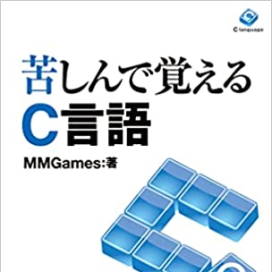
Read it right next to your computer.
Book version bitter C
The type of numerical data, differing in aspects such as the maximum number of digits and whether it's an integer or a real number.
| 型名 | Numeric types |
|---|---|
| int | 整数 |
| double | 実数 |
These two are identical in how they're used, differing only in the type of numbers they store.
#include <stdio.h>
int main(void)
{
double left, right;
left = 10;
right = 3;
printf("%f\n", left + right);
printf("%f\n", left - right);
printf("%f\n", left * right);
printf("%f\n", left / right);
return 0;
}
Learning C language through suffering (Kushi C) is
This is the definitive introduction to the C language.
It systematically explains the basic functions of the C language.
The quality is equal to or higher than commercially available books.